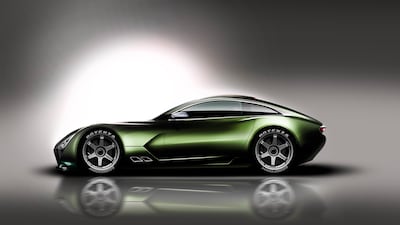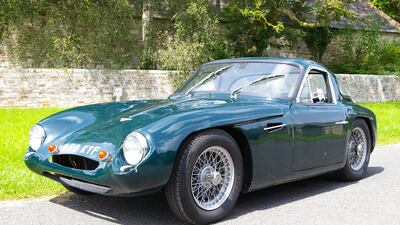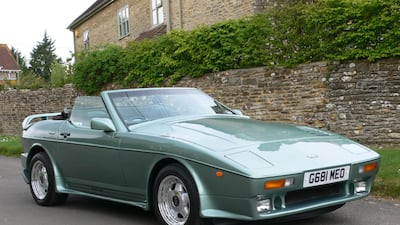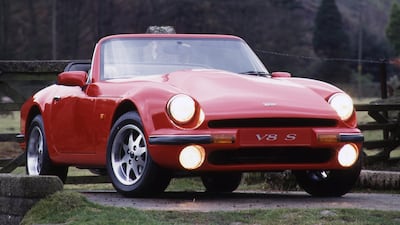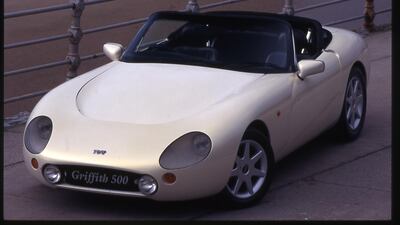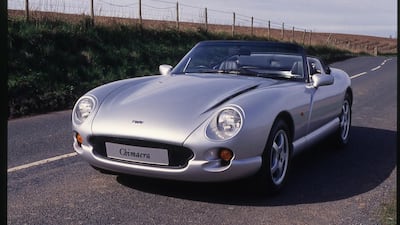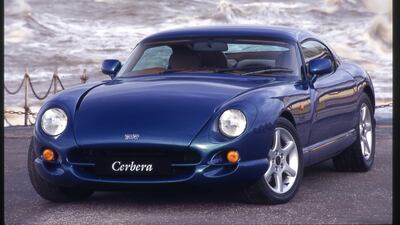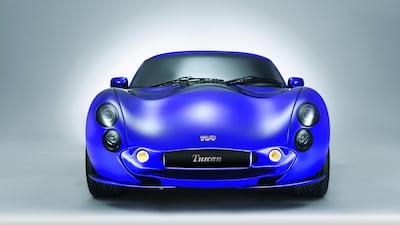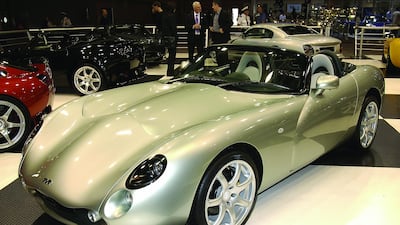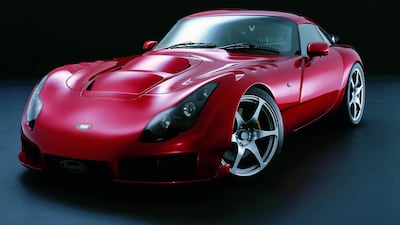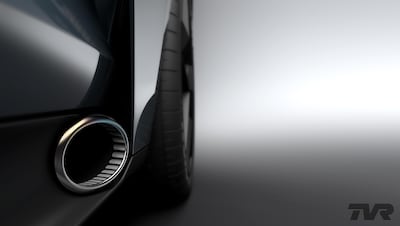In 2005, I was sitting at my desk one day when a parcel arrived from TVR. Inside sat a scale model of the Sagaris – the British sports-car company's most-recent offering before a decade of takeovers and inactivity. As I took it out for closer inspection, the rear spoiler fell off. "Ah, a true TVR," a colleague laughed.
The company was founded in 1947, the same year as Ferrari, by Trevor Wilkinson – where the TVR name comes from. It would go on to become the third-largest specialised sports-car manufacturer in the world. Its popularity peaked in the 1990s and 2000s, with models such as the Griffith, Chimaera, Cerbera, Tuscan and 400SE.
But dogged by low sales and bankruptcy in the 1960s, then build-quality issues in the 2000s, plus the appeal of competitors such as the Porsche Boxster, the brand fell silent under the ownership of Russian businessman Nikolai Smolensky.
Now, under the control of Les Edgar, working in partnership with legendary designer Gordon Murray, the man behind the McLaren F1, TVR is back in the business of building cars. It will launch its new model at the Goodwood Revival on September 8.
While the exact looks and name remain a secret (rumours abound that it will wear the Griffith badge used by TVR since the 1960s), we do know that it will be a loud, two-seat sports car, with a 5.0-litre V8 Cosworth engine and six-speed manual gearbox. We also know that it will be built using Murray's "iStream" carbon chassis, which is extremely rigid and light. TVR has released a teaser showing side exhausts (pictured right). I have seen a 3-D model of the car, and although sworn to secrecy until the big reveal, can confidently say that lovers of the badge will not be disappointed.
The performance figures released so far are tantalising: a top speed of 322kph, 0-to-100kph in less than four seconds and a weight of 1,200 kilograms, which equates to a power-to-weight ratio of 400bhp per tonne.
"It's pretty frantic, but the car build is bang on track," Edgar grins. "All the major bits are nailed to the car. I think someone's applying some paint and trim at the moment."
Edgar sounds just the man to raise TVR, phoenix-like, from its ashes in Blackpool, England. His past is in the video-gaming industry, but he has long loved Aston Martin and endurance racing, and has believed, since he took on TVR in 2013, that the brand should be linked with top-level motor racing.
"It seems crazy that you'd be a high-performance sports-car manufacturer without proving it, and for me, having spent the last 32 years going to Le Mans, that's the ultimate test: the whole season of Formula One in one 24-hour period," Edgar reasons. "That sorts the men out from the boys. As much as I admire F1 … I can't relate to the car. The car needs to look like a car I can buy; a car I can aspire to."
_______________________
READ MORE:
_______________________
Production of the road car begins in Wales next year. Customers have been putting down deposits already, after TVR ran them through the car's details in March. It will cost about £90,000 (Dh431,337).
"If you take the Sagaris, when it was produced in 2005, it was around £60,000 when you put air conditioning in and paint on it, so in [inflation] terms, we're roughly close," Edgar says. "This car is a fully-specced car – there's not an awful lot you can put on it to increase the price. It's got full-leather luxury interior trim, special launch edition paint, and my undying love and gratitude to every buyer."
While there are no plans for TVR to set up an official presence in the UAE for now, the company says it is able to import cars to customers in the Emirates. If you're interested, however, time is of the essence, because the initial production run will be relatively small.
TVR's operations director, John Chasey, says of its sales targets: "Five hundred in the first calendar year of production, and we'll ultimately expect to grow that over a few years up to in the region of 2,000 a year. The quality is one of the key things we need to get right, so we'll make sure we ramp up volumes in a sustainable way."
Ah, yes, build quality.
"You can't build a sports car these days without it having fantastic quality and reliability, so our strategy on that front has been the iStream process from Gordon Murray, which lends itself to producing inherently very high-quality construction," Edgar says. "It's very torsionally rigid, for example, so the thing's not going to be shaking itself to bits as you drive down a bumpy road. Typically, it's probably seven to 10 times more torsionally rigid than any other TVR.
"[As for] reliability, the ethos is to take proven components where possible and bespoke them for TVR, which is why we've gone for a Ford base engine and given it a Cosworth to sprinkle the magic on it to make it special.
"We've also tried to remove unnecessary driver aids or electronic intervention, and that has three effects: it has a weight benefit, it has a reliability benefit and it has a cost benefit. Replacing those things with a fantastically engineered chassis and aerodynamic superior shape, we're replacing those complex bits with physics, essentially. And physics, as we know, is fairly reliable. That's what I was told, anyway."
Edgar is likeable. He seems to understand TVR's heritage, but isn't afraid to develop the marque – which means no plans for SUVs or electric cars. After various failed incarnations, let's hope that TVR succeeds this time round.
Erin Baker is a motoring journalist based in England and former motoring editor at The Daily Telegraph
